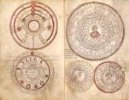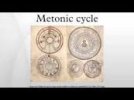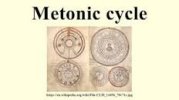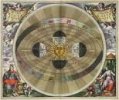T
thisplacerocks
Guest
Thank you for your reply, MJF.
Also, I made a mistake in my previous post. In Egyptian Civilization: Its Sumerian Origin and Real Chronology (which can be downloaded for free at b-ok.org), L. A.Waddell states Narmer (aka Naram) is the son of Menes (aka Manj in India aka Manis-Tusu in Mesopotamia). In this link (Naram-Sin), it also states that Naram-Sin of Akkad is the successor to Manishtusu (sounds similar to Manis-Tusu aka Menes) using other experts. The identity of Narmer and Menes is a source of confusion for many Egyptologists but if you find records from Mesopotamia, it helps clarify their identities.
Another point Waddell made was Sargon is the father of Menes. Waddell compared the king list of Mesopotamia, Egypt and India and found similarities in the king lists, showing Sargon to be the father of Menes.
The reason I mentioned Abraham (Ay) and Hermes (Narmer) is I view them as the later leaders who tried to imitate Sargon (to trick the people perhaps?) but at the same time, whether intentionally or unintentionally, subverted the original religious and spiritual goddess beliefs of Sargon. I should have stated clearly that I don't see Sargon as Abraham and Hermes.
Secondly, there are historical records showing Sargon's conquest reached Egypt, according to Waddell. An archive from an old sun temple in Nippur a Sumerian city, as quoted in his book,
Waddell also quotes another expert who agrees that Sargon included Egypt known as "Mizir" in his empire, and observed that none of the history books on Babylonian or Egyptian history mentioned this (perhaps censored by the powers that be?) despite the evidence. He claims to have found Sargon's tomb in Abydos Egypt along with his queen's tomb. Since I'm no expert in ancient Egyptian matters, I can only take him at his word.
Note in the quote above that Sargon's empire extended to the tin mines of Cornwall which I will get back to later to try and connect with Trent.
Trent
Another name for Trent is Trisantona (hxxp://www.marikavel.org/rivieres/arun.htm). The link states there is a goddess called Sentona in Eastern Europe and it is likely that Trisantona is derived from Sentona, so Trisantona means triple goddess. Sargon is linked with Inanna so it makes sense that he is the Aryan of the triple goddess.
Trisantona is also the name of the river Arun. Ancient Sanskrit word Arun is found to be referred in Riga Veda (ऋग्-वेद) and Unadi-Sutra (उणादि-सूत्र) where Arun means the reddish-brown, tawny, red, ruddy or the color of morning. Note the parallels with Scythians who have red hair. Also, note that Arun sounds like Aryan which might mean silver or white (hxxps://cogniarchae.com/2017/12/21/what-does-aryan-mean/), so Aryan one of Trent may refer to the river Arun amongst the two rivers.
This river is quite near Cornwall, which might be part of Sargon's empire. There are several historic buildings near river Arun such the Arundel castle and the Arundel cathedral. Could there be
There's also a river Arun in Nepal but this seems a stretch.
Wild guess: Narmer/Naram the minotaur did sacrificial rituals to become Hermes 353535
If Sargon's empire extends as far as England, then it is possible that it includes Crete, which is just above Egypt across the Mediterranean Sea. That's where Menes build the temple. The pottery of Crete and Egypt is similar. The story of Menes parallels Minos.
Could "Haho" and "Hoh" be related to Horus, or Haru, Hu or Ha? Naram-Sin did not have a good reputation and did spiritual damage, similar to Hermes the traitor. Naram-Sin is featured in the "Curse of Agade" as the king who brought the downfall of Agade when he destroyed the temple of Enlil. This provokes the wrath not only of Enlil but of the other gods who send the Gutium, "a people who know no inhibition, with human instincts but canine intelligence and with monkey features" (Leick, 106) to invade Akkad and lay it waste. Famine took place.
If Narmer was the minotaur in Crete, then it would not be surprising that people on Crete were worshipping the apis bull, which is an egyptian bull god and perhaps sign of Narmer. Cs said that some druids scalped heads and prayed in order to gain STS energy. It can be what's Narmer doing with all the sacrifices: to gain so much STS energy that he becomes a 4D STS entity that resides in an apis bull much like how the Cs mention that pigs were good carriers of STS forces. Perhaps the reason it took place on Crete was Narmer wanted to carry out his sacrifices in secret away from the eyes of the Egyptians.
I find some parallels between the story of King David and the minotaur story. David's daughter Tamar was raped by his firstborn Amnon, perhaps similar to Minos wife being forced to sleep with the Cretan bull.
Timeline for ancient history is not entirely reliable. Experts claim Sargon lives in 2,334- 2,279 BC yet the Cs said that Sargon might be the father of the Scorpion King, who is either Narmer or his contemporary. Narmer's rebellion is around 3211 BC, which is way earlier than what experts claimed Sargon's timeline is. Laura also doubts experts' views on timeline in her book Secret History in the section on Sargon the Great.the C's gave the year of the Narmer rebellion as being 3211 BC (see session dated August 17, 2003). This is long before Sargon's time.
First, I see a contradiction in your timeline. Indeed, the bible states that King David is a descendant of Abraham but the Cs say Narmer is King Solomon (who is son of King David) and Narmer is earlier than Abraham/Pharaoh Ay. Assuming that King David is the father of King Solomon, King David lived earlier than Abraham. At that time of the session (23 Aug 2001), I think Laura assumed King David is the descendant of Abraham even though a few days before (20 Aug 2001), she knew Sarah is Nefertiti and Cs said Narmer is King Solomon. In other words, King David is the ancestor of Abraham, contrary to the bible.There is no historical record or basis for assuming Sargon the Great ever reigned over Egypt. However, if you are proposing that Narmer (Solomon) was the son of Sargon, then this would equate Sargon to King David, Solomon's biblical father. However, the C's have ssaid that David, a levite, lived some five generations after Abraham/Moses' time and we know that Abraham/Moses fled from the Pharaoh Akhenaten with the Ark some time around 1600 BC.
Q: (L) So, it started out with Abraham and his tribe. Did he have reinforcements of his Levite brothers who came and joined his tribe from Hittite land?
A: Close.
Q: (L) Are there any details of this story that I haven't covered that I ought to?
A: David was a Levite.
Q: (L) Was he of the line of Abraham?
A: No.
Q: (L) Did he come from "Hittite land?"
A: Close.
Q: (L) How many generations before he was born did his family come to the area of Palestine?
A: 5.
Q: (L) Were they relatives of Abraham? [Celts]
A: Somewhat.
Q: (L) Distantly related. So, what did David do? Came along and gathered the people together?
A: Yes.
Also, I made a mistake in my previous post. In Egyptian Civilization: Its Sumerian Origin and Real Chronology (which can be downloaded for free at b-ok.org), L. A.Waddell states Narmer (aka Naram) is the son of Menes (aka Manj in India aka Manis-Tusu in Mesopotamia). In this link (Naram-Sin), it also states that Naram-Sin of Akkad is the successor to Manishtusu (sounds similar to Manis-Tusu aka Menes) using other experts. The identity of Narmer and Menes is a source of confusion for many Egyptologists but if you find records from Mesopotamia, it helps clarify their identities.
Another point Waddell made was Sargon is the father of Menes. Waddell compared the king list of Mesopotamia, Egypt and India and found similarities in the king lists, showing Sargon to be the father of Menes.
Waddell also used other evidence like inscriptions from Egypt and Mesopotamia to prove his claims. To have evidence from different locations even as far as India gives great credubility to his claims. it seems most likely that Sargon is the father of Menes. To sum up, if one accepts the research of Waddell and combines it with the biblical story and Cs, Menes is King David (both united the people) and his son Narmer/Naram is King Solomon. Sargon is the father of Menes, so Sargon might be "Jesse" father of King David in the bible. Jesse means gift and offering to the divine, and he comes from Bethleham. Also note the similarities to Joseph and Jesus, who is a composite of several people.The first clues to these discoveries were gained by my observation that Menes (as he was called by the Greeks) or Manj (as he is usually called in his own Egyptian inscriptions) 1 appears in his due chronological position along with his dynasty in the official king-lists of the Early Aryans from the first king onwards, as preserved in the ancient Indian epic chronicles, the Puranas, In the latter he bears the name of Asa Manja, or 1/ Manja the shooter" in the solar version of these lists, and Manasyu or Manas-the-Uniter in the lunar version.2 And the great Indian epic, the Maha-Bharata, in supplementing the Purana chronicle account, describes him as 1/ Manasyu of the line of the Prabhu [Paraa or , Pharaoh '], the royal eye of Gopta [Kopt or Egypt] and of the four ends of the earth." 3 The Indian epic king-lists further record that he was the son and successor of the mighty world-emperor, King Kuni or Sha-Kuni or Sagara, whom I had fully identified with the Mesopotamian world- emperor, whose name is variously spelt Kin, Gin, Gani, Guni, or Shar-Guni, a name which is arbitrarily semitized by Assyriologists into 1/ Sargon," in order to equate it with the Hebrew name 1 / Sargon " of the much later notorious Semitic Assyrian king of that name in the eighth century B.C. who carried the Jews into exile, and from whom they dis- tinguish the former as 1 / Sargon-the-Great."
The reason I mentioned Abraham (Ay) and Hermes (Narmer) is I view them as the later leaders who tried to imitate Sargon (to trick the people perhaps?) but at the same time, whether intentionally or unintentionally, subverted the original religious and spiritual goddess beliefs of Sargon. I should have stated clearly that I don't see Sargon as Abraham and Hermes.
Secondly, there are historical records showing Sargon's conquest reached Egypt, according to Waddell. An archive from an old sun temple in Nippur a Sumerian city, as quoted in his book,
(It is likely that the 2800 BC is inaccurate as it assumes Sargon lived after 2800 BC. )refers to his "conquest of the land of the Muru (Amorites)" and mentions his suzerainty over "the Tin-land country which lies beyond the Upper Sea [Mediterranean]." This obviously refers to Sargon's sovereignty over the tin-mines of Cornwall and I have ad-duced evidence for the introduction of the Bronze Age into Britain by Amorites before his epoch or about 2800 B.C. And it mentions that" the produce of the mines is taken, and the pro-duce of the fields to King Gin has been brought." And Egypt or Mishir or Mizir is mentioned as being within his frontiers.
Waddell also quotes another expert who agrees that Sargon included Egypt known as "Mizir" in his empire, and observed that none of the history books on Babylonian or Egyptian history mentioned this (perhaps censored by the powers that be?) despite the evidence. He claims to have found Sargon's tomb in Abydos Egypt along with his queen's tomb. Since I'm no expert in ancient Egyptian matters, I can only take him at his word.
Note in the quote above that Sargon's empire extended to the tin mines of Cornwall which I will get back to later to try and connect with Trent.
Sargon's Agade is the earliest mentioning of the word Arcadia in mankind's recorded documents in mankind's current history. The earliest version is most likely the original. It is unfortunate that there are so few contemporary records. I think being able to interpret clues and find patterns using the "Green Language" as recommended by Fulcanelli is the best and only way to fill in the historical gaps, until the wave hits us and gives us super psychic powers :).Sargon is known almost entirely from the legends and tales that followed his reputation through 2000 years of cuneiform Mesopotamian history, and not from any documents that were written during his lifetime. The lack of contemporary record is explained by the fact that the capital city of Agade, (note the homophonic similarity to Arcadia) which he built, has never been located and excavated. It was destroyed at the end of the dynasty that Sargon founded and was never again inhabited, at least under the name of Agade.
Laura notes that "the word “pharoah” simply means “house of” and Rana is the feminine of Raja, Ra, etc. So the term would mean the “house of the Queen”." Also, the Indian king list comes from a sacred Sanskrit text called Vishnu Purana. Purana means old in the cosmic sense in Sanskirt. I guess it could be the combination of Pero (Pharaoh) and Rana (Queen). Hence, it might refer to spiritual goddess beliefs as well as the kings who upheld them.That being said, there is no extant record of a Pharaoh Rana so it is difficult to identify him or her.
Trent
Another name for Trent is Trisantona (hxxp://www.marikavel.org/rivieres/arun.htm). The link states there is a goddess called Sentona in Eastern Europe and it is likely that Trisantona is derived from Sentona, so Trisantona means triple goddess. Sargon is linked with Inanna so it makes sense that he is the Aryan of the triple goddess.
Trisantona is also the name of the river Arun. Ancient Sanskrit word Arun is found to be referred in Riga Veda (ऋग्-वेद) and Unadi-Sutra (उणादि-सूत्र) where Arun means the reddish-brown, tawny, red, ruddy or the color of morning. Note the parallels with Scythians who have red hair. Also, note that Arun sounds like Aryan which might mean silver or white (hxxps://cogniarchae.com/2017/12/21/what-does-aryan-mean/), so Aryan one of Trent may refer to the river Arun amongst the two rivers.
This river is quite near Cornwall, which might be part of Sargon's empire. There are several historic buildings near river Arun such the Arundel castle and the Arundel cathedral. Could there be
There's also a river Arun in Nepal but this seems a stretch.
Wild guess: Narmer/Naram the minotaur did sacrificial rituals to become Hermes 353535
it is significant that Menes also is credited with the erection of a "Labyrinth" in Egypt.! His son was a Wild Bull-Man, so-called" Mino-Taur," just as the son of Menes or Manis was called" The Strong Wild Bull," Nar-am -- in which Nar means in both Sumerian and Egyptian "Strong or Mighty," 2 and am " Wild Bull" is invariably the sign by which Nar-am wrote his name, and significantly as we shall see he as "N ar-mar " of Egypt represents himself pictorially on his victory Palette as a Wild Bull [Waddell]
Q: Was the Temple on Crete at Knossos, was it really a necropolis as Wunderlich suggests?
A: 5th density waiting room.
Q: Did they sacrifice humans there?
A: Yes.
Q: Did they sacrifice animals?
A: Yes.
Q: What animals were they sacrificing, and to whom?
A: Apis Bull in part.
Q: What was the other part?
A: Haho 353535
Q: "Ho" must be a name. Is Ho a name of a god?
A: HOH 353535
Q: (T) Is it water? (L) Is it like Hawah? (A) HOH water?
A: Remember Irish pig.
Q: Was this temple the source of the legends of the Temple of Solomon?
A: Yes.
Q: Was Solomon also King Menes of Minos of Crete?
A: No.
Note that Cs say Solomon is not King Menes, implying that Narmer is not Menes.The Solar title of Pharaoh is called by Egyptologists " the Horus name" from " Horus" or Haru, the title of the Sun and of the Sun-Hawk, which is presumably derived from the Sumerian Hu or Ha name for the Hawk." [Waddell]
(Interesting to note that Haru looks like Ham, son of Noah. )
If Sargon's empire extends as far as England, then it is possible that it includes Crete, which is just above Egypt across the Mediterranean Sea. That's where Menes build the temple. The pottery of Crete and Egypt is similar. The story of Menes parallels Minos.
Could "Haho" and "Hoh" be related to Horus, or Haru, Hu or Ha? Naram-Sin did not have a good reputation and did spiritual damage, similar to Hermes the traitor. Naram-Sin is featured in the "Curse of Agade" as the king who brought the downfall of Agade when he destroyed the temple of Enlil. This provokes the wrath not only of Enlil but of the other gods who send the Gutium, "a people who know no inhibition, with human instincts but canine intelligence and with monkey features" (Leick, 106) to invade Akkad and lay it waste. Famine took place.
If Narmer was the minotaur in Crete, then it would not be surprising that people on Crete were worshipping the apis bull, which is an egyptian bull god and perhaps sign of Narmer. Cs said that some druids scalped heads and prayed in order to gain STS energy. It can be what's Narmer doing with all the sacrifices: to gain so much STS energy that he becomes a 4D STS entity that resides in an apis bull much like how the Cs mention that pigs were good carriers of STS forces. Perhaps the reason it took place on Crete was Narmer wanted to carry out his sacrifices in secret away from the eyes of the Egyptians.
I find some parallels between the story of King David and the minotaur story. David's daughter Tamar was raped by his firstborn Amnon, perhaps similar to Minos wife being forced to sleep with the Cretan bull.








